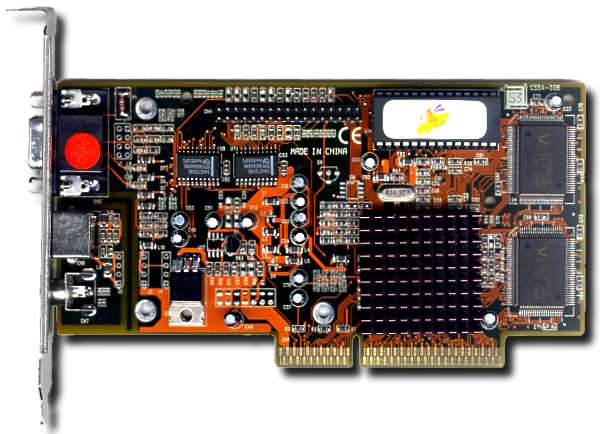S3 Savage3D

Savage3D had an internal 128-bit architecture with a dual rendering pipeline. It coped with trilinear filtering in one clock cycle. In this it was similar to other graphics chipsets of the latest generation. However, memory access uses a 64-bit bus running at 125 megahertz. The computing power of Savage3D allows calculating up to 5 million triangles and 125 million textured pixels (texels) per second. In terms of speed, this processor is somewhat superior, for example, to RIVA 128ZX (up to 5 million triangles and 100 million texels per second), but is significantly inferior to RIVA TNT (up to 8 million triangles and 250 million texels per second). Unlike previous S3 3D chipsets, Savage3D has a full set of 3D graphics features. It also supports video playback.
The Titan-5000 board is equipped with 8 megabytes of memory and an AGP 2X interface. In addition to the monitor, it allows you to connect a TV, and the picture will be displayed on both devices at the same time. Support for multiple monitors is also provided, which became available to the mass user with the release of Windows 98.
With 8 megabytes of memory and 250 MHz RAMDAC, the Titan-5000 board allows you to work with 2D graphics at the highest resolutions - up to 1,600 x 1,200 pixels - with 32-bit color and a frame rate of 85 Hz.
This is the main feature of the S3 Savage3D chip. Basically, textures play a crucial role in entertaining 3D graphics. Without them, only plastic items can be made. Any other material requires a texture to be applied. And any drawing - inscriptions, faces, house windows, car windows - is also done using textures.
Using the AGP bus allows you to save more textures. In this case, not only the built-in memory of the video card, but also the RAM of the machine is used to store them. However, system memory is not suitable for visualization - the exchange with it is too slow. S3 proposed an efficient texture compression algorithm by implementing it in the Savage3D chip. Microsoft made it a standard and included it in DirectX 6.0.
Specifications S3 Savage 3D
128 bit 2D engine with 250 MHz RAMDAC;
3D core running at 125 MHz;
Single-pass rendering allowing "free" trilinear MIP-mapping
Geometry generator producing 5M triangles per second
Fill Rate of 125M pixels per second
Edge anti-aliasing support
Texture compression
AGP 2X support
MPEG-2 video texture support ;
Up to 8 megabytes of memory on the card;
TV-out support.
In terms of 3D performance, the S3 Savage 3D couldn't outperform graphics cards based on other new chipsets - nVIDIA RIVA TNT, 3Dfx Voodoo2 or Voodoo Banshee.



